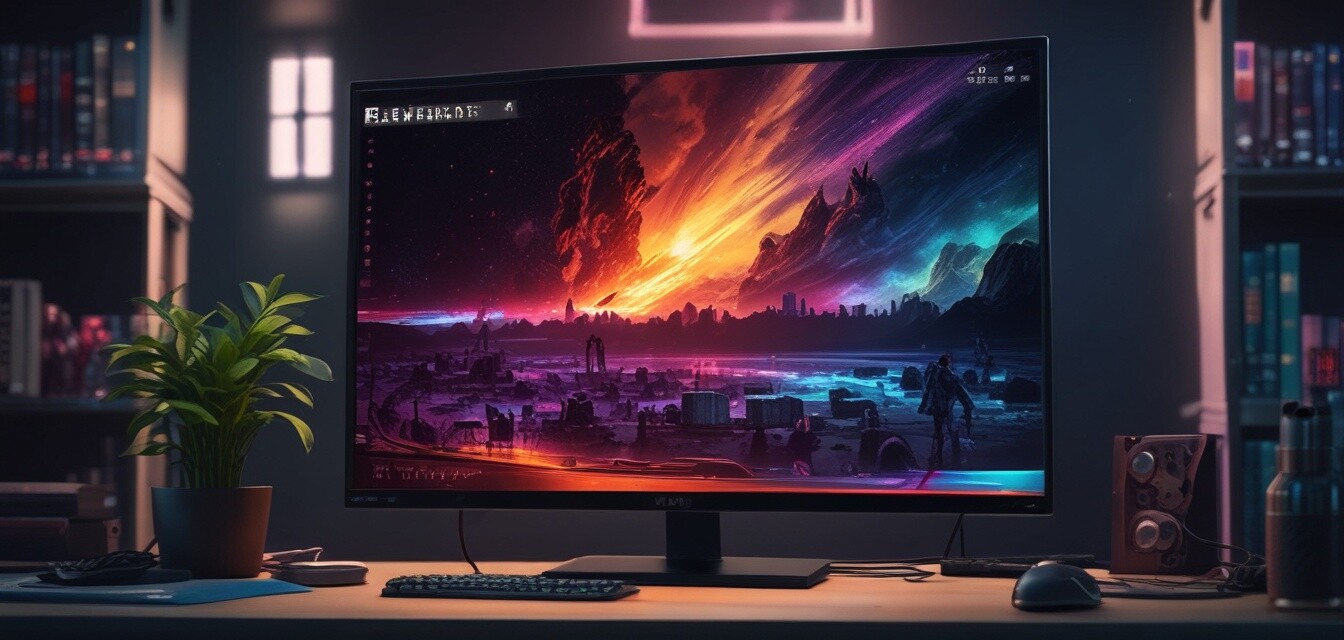
The essentials of calibration for your OLED monitor
Key Takeaways
- Calibration enhances visual accuracy and gaming performance.
- Use calibration tools for the best results.
- Adjust brightness, contrast, and color settings for optimal display.
- Regular calibration ensures consistent visual quality over time.
In the world of gaming, having the right tools is just as crucial as having the right skills. One of the essential tools in your arsenal is your OLED monitor. Proper calibration of your monitor can significantly improve your visual experience, delivering accurate colors, enhanced contrast, and better overall performance during gaming.
Why calibrate your OLED monitor?
Calibration not only improves aesthetics but also ensures that you see what the developers intended. Here are several reasons why calibration is vital:
- Correct colors that match gaming content.
- Enhanced contrast ratio for improved dark scene visibility.
- Reduced eye strain during prolonged gaming sessions.
- Optimized brightness for immersive gaming.
Tools needed for calibration
The following tools can help you calibrate your OLED monitor effectively:
| Tool | Description |
|---|---|
| Colorimeter | A device to measure color accuracy and adjust settings. |
| Calibration Software | Software that guides users through the calibration process. |
| Test Patterns | Visual aids used to assess color, contrast, and sharpness. |
Steps to calibrate your OLED monitor
Follow these steps for effective calibration:
- Warm up your monitor for at least 30 minutes before calibration.
- Adjust your monitor’s brightness to a comfortable level.
- Use a colorimeter and calibration software to assess colors.
- Set the contrast ratio based on the software guide.
- Adjust the color temperature to your liking, typically 6500K is ideal.
- Use test patterns to fine-tune settings (sharpness, gamma, etc.).
- Save your settings, and remember to recalibrate periodically.
Understanding monitor settings
To get the most out of your calibration, it’s essential to understand various monitor settings:
| Setting | Description | Ideal Range |
|---|---|---|
| Brightness | Controls the light intensity of the display. | 40-60% for gaming. |
| Contrast | Adjusts the difference between light and dark pixels. | 70-90% for enhanced detail. |
| Color Temperature | Defines the warmth or coolness of the image. | 6500K is standard. |
Common calibration mistakes to avoid
Even with the right tools, you can easily make mistakes during calibration. Be mindful of these:
- Calibration without proper lighting can distort results.
- Not adjusting the monitor settings according to viewing distance.
- Neglecting to recalibrate periodically, which can lead to drift.
- Over-saturation of colors leading to unrealistic hues.
Pros
- Improved color accuracy enhances gaming visuals.
- Better contrast allows for clearer visuals in dark scenes.
- Customized settings based on personal preference.
Cons
- Calibration can be time-consuming.
- Requires additional tools which may incur costs.
- May need to be adjusted frequently for optimal results.
When to recalibrate your monitor
It’s crucial to know when to revisit your calibration settings. Here are key indicators:
- Every three to six months for regular users.
- After switching to different lighting conditions in the room.
- After a firmware update that alters settings.
- When colors seem off or faded.
Conclusion
Your OLED monitor is a critical component of your gaming experience. By following the above calibration steps, you can ensure it performs at its peak, delivering stunning visuals and enhancing your overall gaming experience. Don't forget to revisit your settings regularly to adapt to your gaming environment. For more tips and guides, explore our Buying Guides or check our selection of 4K OLED gaming monitors.